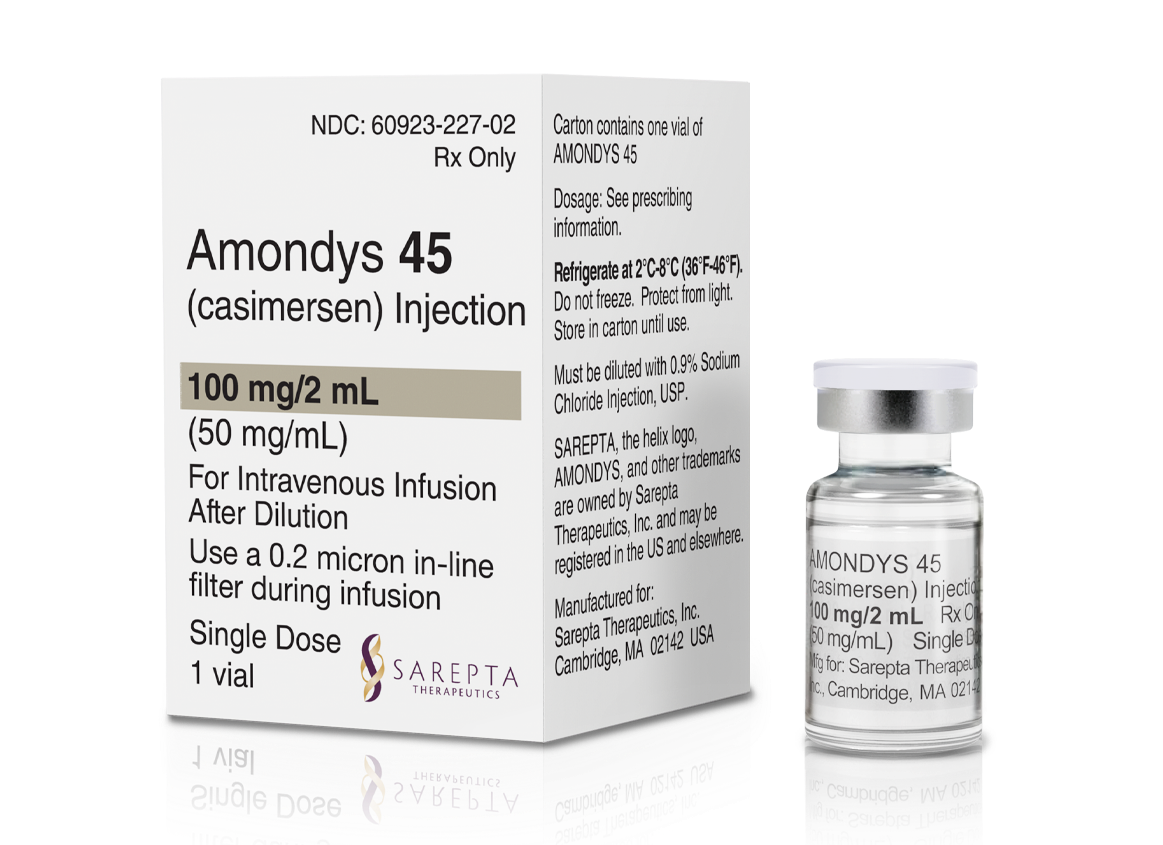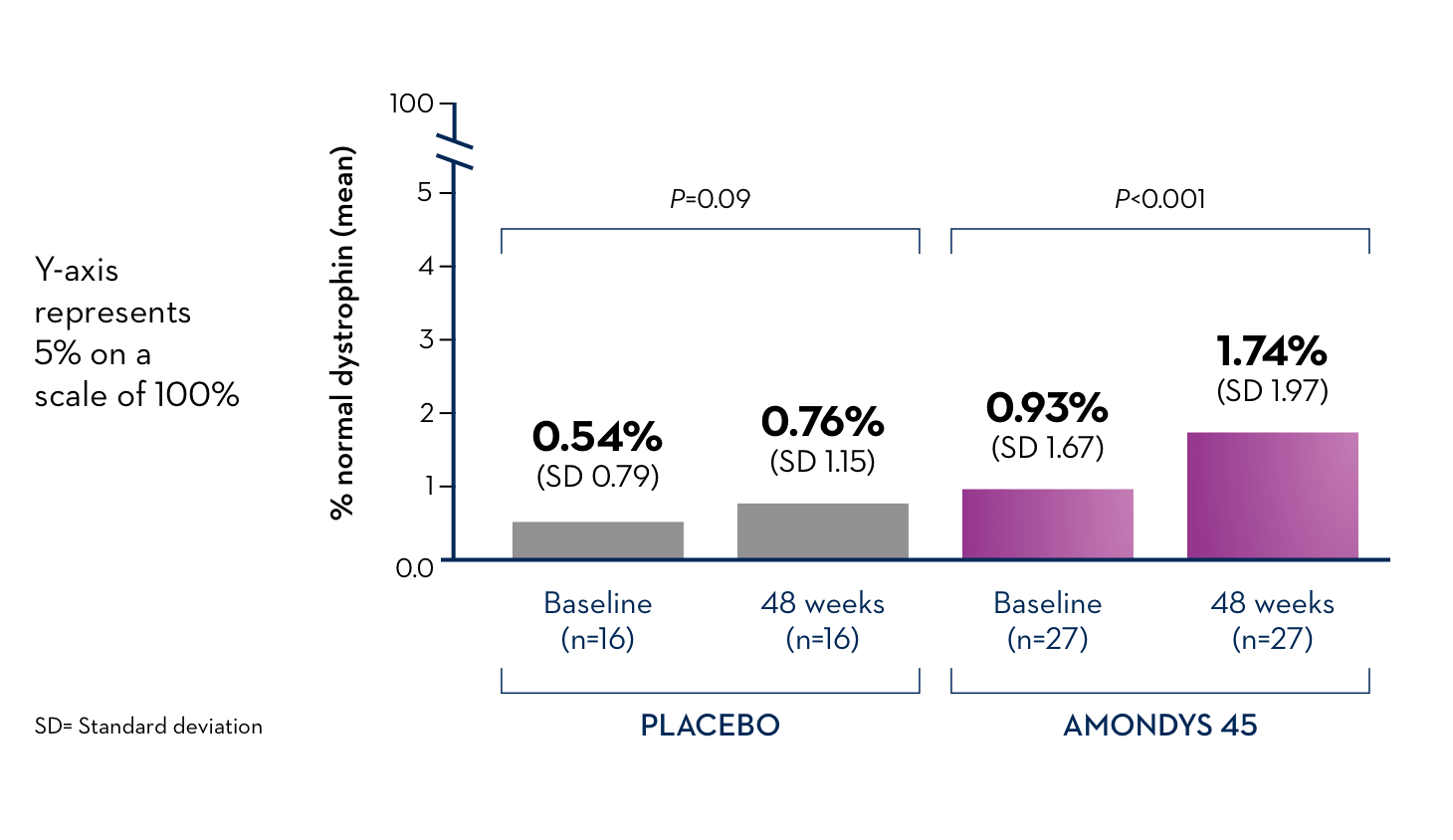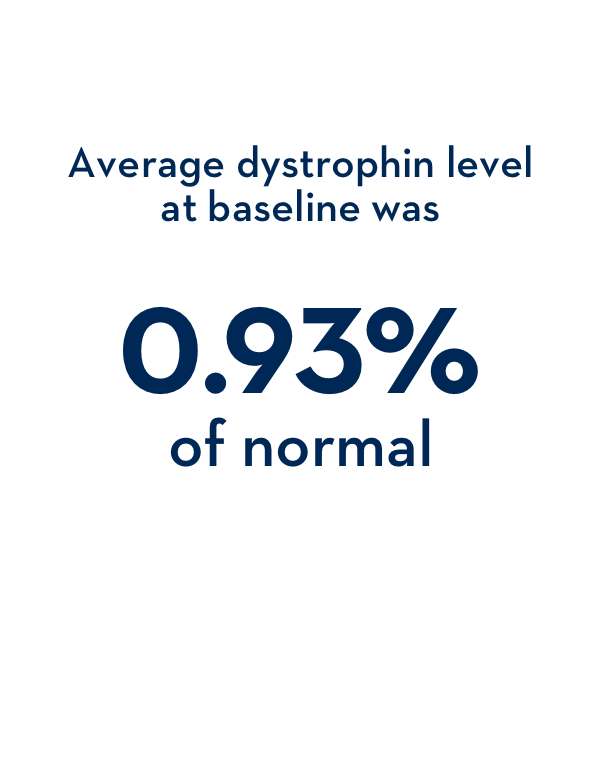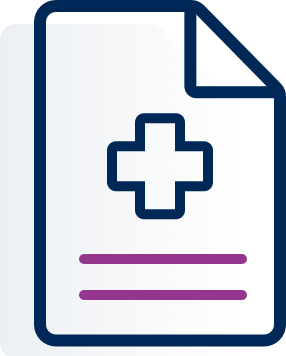
Weekly infusions of AMONDYS 45 (casimersen) have been shown to help the body make a shorter form of the dystrophin protein.a
aBoys treated with AMONDYS 45 showed varying levels of increased dystrophin production after 48 weeks. In an ongoing clinical study, 27 boys (median age 9 years) receiving AMONDYS 45 had an average dystrophin level of 1.74% of normal, compared to 0.76% in 16 boys who received a placebo infusion.

Understanding AMONDYS 45.
AMONDYS 45 is a treatment for Duchenne muscular dystrophy (DMD). It uses a technology called exon skipping to help the body make a shorter form of the dystrophin protein.a AMONDYS 45 is given in a once-weekly infusion.
AMONDYS 45 is used to treat patients with Duchenne muscular dystrophy (DMD) who have a confirmed mutation in the dystrophin gene that can be treated by skipping exon 45.
This indication is approved under accelerated approval based on an increase in dystrophin production in skeletal muscle observed in patients treated with AMONDYS 45. Continued approval for this indication may be contingent upon verification of a clinical benefit in confirmatory trials.
aBoys treated with AMONDYS 45 showed varying levels of increased dystrophin production after 48 weeks. In an ongoing clinical study, 27 boys (median age 9 years) receiving AMONDYS 45 had an average dystrophin level of 1.74% of normal, compared to 0.76% in 16 boys who received a placebo infusion.
Results from an ongoing AMONDYS 45 clinical study.
Researchers are conducting a clinical study of AMONDYS 45 to review different aspects of the medicine, including whether it triggers skipping of exon 45 on the dystrophin gene. They also analyzed the amount of dystrophin produced, along with its safety profile. AMONDYS 45 was studied in boys who had a confirmed mutation in the dystrophin gene that could be treated by skipping exon 45. Learn what this means.
Beck's Inspiration: Navigating Duchenne with AMONDYS 45
Join Beck and his family as they navigate living with Duchenne muscular dystrophy. Discover Beck's diverse interests, his contributions to the Duchenne community, and the motivation behind his continued treatment with AMONDYS 45.
Designed to skip exon 45.
Patients who received AMONDYS 45 (27 patients) showed a significant increase in exon skipping, based on muscle biopsies taken at the start of the clinical study and after 48 weeks.
This significant increase in exon skipping was not seen in the 16 patients who received a placebo.

Dystrophin levels increased over baseline in clinical trial participants.
An ongoing clinical study of 27 boys with Duchenne muscular dystrophy compared the level of dystrophin in their bodies before the first infusion (baseline) of AMONDYS 45 with the level of dystrophin after 48 weeks of treatment with AMONDYS 45. The results were compared to 16 boys with Duchenne who received placebo for 48 weeks. Interim results showed weekly infusions of AMONDYS 45 helped the body make a shorter form of the dystrophin protein. The amount of dystrophin produced varied in the study.
Average dystrophin protein level in muscle tissue in patients amenable to exon 45 skipping, as measured by Sarepta western blot

Dystrophin levels measured by western blot can be strongly affected by differences in how the sample is processed and analyzed, the reference material used, and the quantification method.
Comparing dystrophin results from other methods of measurement requires standard reference material and additional studies.
What do the results tell us?


![AMONDYS 45 demonstrated a significantly greater increase in dystrophin levels – 0.81% of normal from baseline to week 48 compared to those who received placebo (0.22% of normal [average difference of 0.59%; P=0.004])](/sites/amondys45/files/2024-12/2-1_results_increase_2x_updated.png)

What about risks? Researchers assessed the risks and tolerability of AMONDYS 45. As with any medication, you should discuss the risks and side effects associated with AMONDYS 45 with your doctor.
